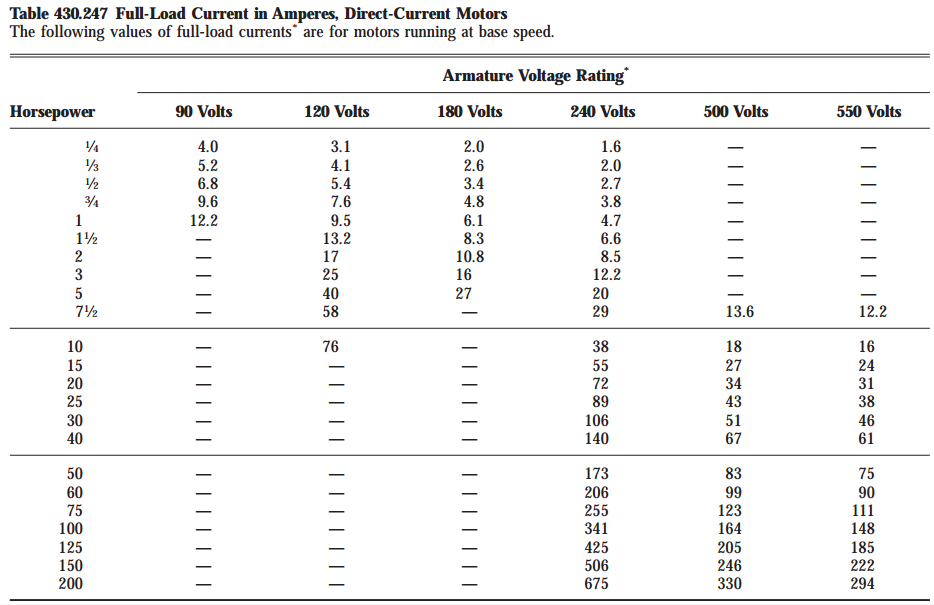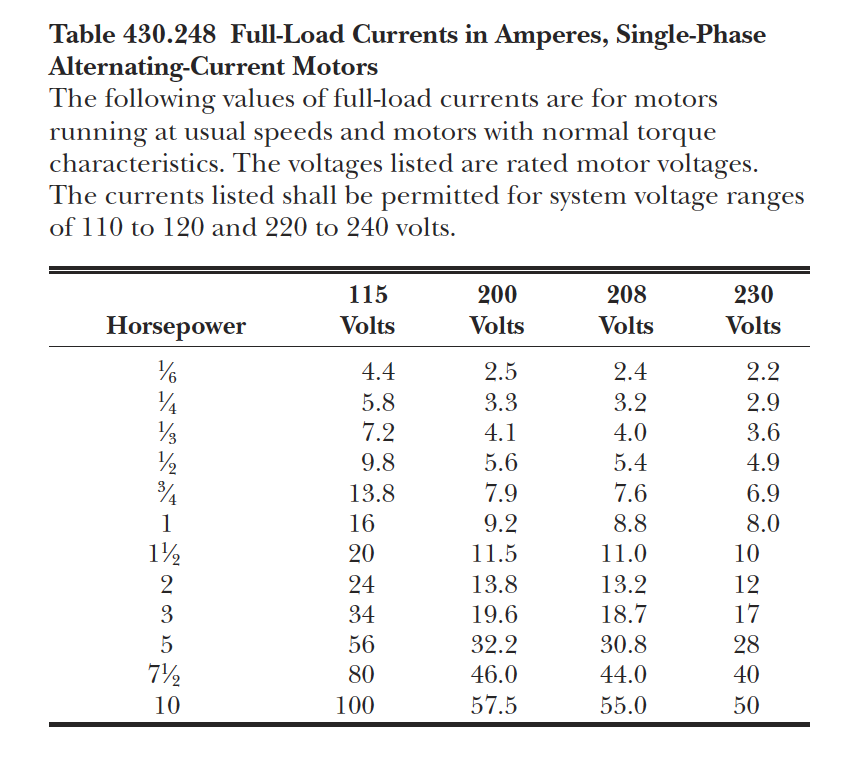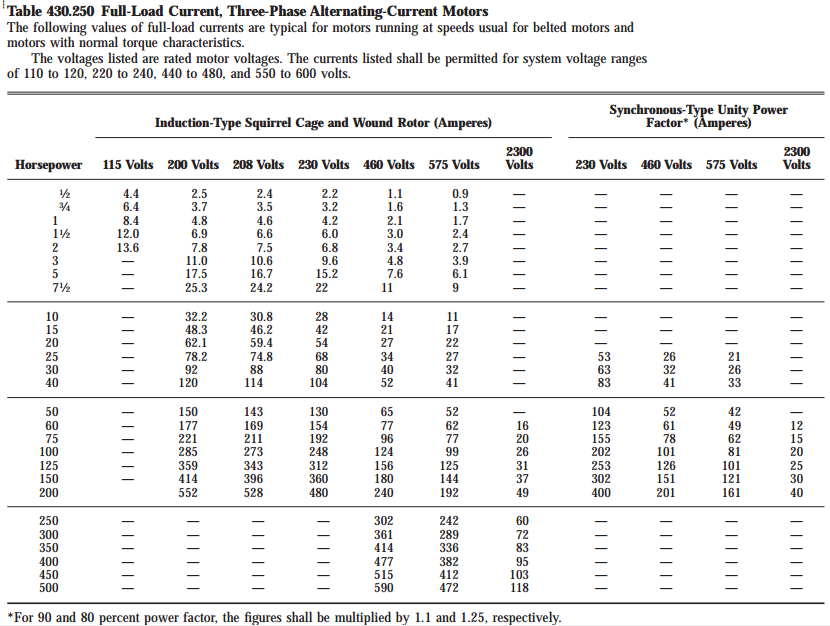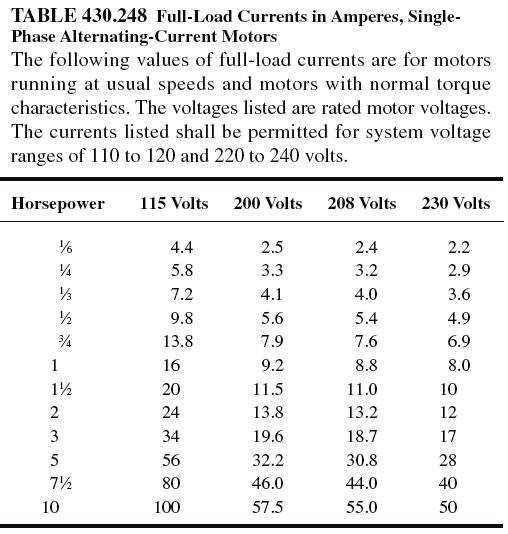Nec Motor Table
Are you an electrical engineer or technician who frequently works with motors? If so, you are most likely familiar with the National Electric Code (NEC) and its motor tables. These tables are essential for proper motor selection, and failing to utilize them could lead to significant issues down the line.
When it comes to selecting a motor for an application, there are several pain points to consider. The motor must be appropriately sized for the load it will be driving, and selecting the wrong motor can lead to inefficiency, power loss, and potential safety hazards.
The target of the NEC motor tables is to provide a comprehensive guide for selecting the correct motor for any given application. These tables contain critical information such as full-load current, horsepower, and motor service factor, making motor selection a breeze.
Overall, the NEC motor tables are an essential tool for anyone working with motors. Ensuring that you correctly utilize these tables will save you a tremendous amount of time and headaches in the long run.
Navigating the NEC Motor Tables
At first glance, the NEC motor tables can seem overwhelming. However, taking a closer look reveals that they are organized in a way that makes finding the necessary information a breeze. The tables are broken down by motor type, HP rating, and service factor, making it easy to find the required information for any given application. Let's take a closer look at the data contained in the motor tables.
Each motor table contains data on Full-Load Current, HP per RPM, Service Factor, and various other key data. Full-load current is essential for sizing circuits and calculating maximum overcurrent protection devices. Motor service factor is critical for determining the suitability of a motor for a given application, as it describes the motor's ability to handle overload conditions.
Applying the NEC Motor Table Data
When selecting a motor, it is crucial to ensure that it can handle the load it will be driving. The NEC motor tables provide all the necessary data to make this decision, including full-load current, horsepower, and service factor. Understanding how to apply this data is crucial for proper motor selection.
For example, suppose you are selecting a motor for a particular application that requires 7.5 horsepower and will be running at 1750 RPM. The NEC motor tables provide a full load current of 34.4 amps and a service factor of 1.15 for a 7.5 HP motor at 1750 RPM. Armed with this data, you can confidently select a motor and ensure that it will perform correctly for the application.
Understanding Motor Service Factor
As mentioned previously, motor service factor is essential for determining the suitability of a motor for a given application. Service factor is the ratio of the motor's permissible overload compared to its rated capacity. For example, a motor with a service factor of 1.15 can handle up to a 15% overload without being damaged.
It is crucial to understand what level of service factor is required for your application. Selecting a motor with too low of a service factor could lead to premature failure or even safety issues.
Finding Reliable NEC Motor Table Data
When working with motors, it is essential to ensure that you are using reliable and up-to-date data. The latest version of the NEC motor tables can be found in the NEC Handbook, which is updated and released every three years. It is crucial to ensure that you are using the correct motor table for the application you are working on and that you double-check the data before making any decisions.
Question and Answer
Q: Are the NEC motor tables applicable in all states?
A: Yes, the NEC motor tables are part of the National Electrical Code and are applicable in all states.
Q: Can the NEC motor tables be used for DC motors as well?
A: Yes, the NEC motor tables can be used for both AC and DC motors, provided that the motor's nameplate data is used to select the appropriate table.
Q: What is the most critical piece of data found in the NEC motor tables?
A: Full-load current is perhaps the most critical piece of data found in the NEC motor tables, as it is essential for sizing circuits and calculating overcurrent protection devices.
Q: Can the NEC motor tables be used for selecting motors in hazardous locations?
A: No, the NEC motor tables are not suitable for selecting motors in hazardous locations. Guidance for selecting motors in hazardous locations can be found in Article 500 of the NEC.
Conclusion of NEC Motor Table
The NEC motor tables are a critical tool for selecting the appropriate motor for any given application. By correctly utilizing these tables, you can ensure that your motors are appropriately sized for the loads they will be driving, resulting in increased efficiency, reduced power loss, and added safety. As always, it is crucial to ensure that you are using up-to-date and reliable data when making any decisions related to motor selection.
Gallery
Nec 430 Motor Tables | I Decoration Ideas

Photo Credit by: bing.com / nec
Nec 430 Motor Tables | I Decoration Ideas

Photo Credit by: bing.com / nec 430 overload
Nec 430 Motor Tables | I Decoration Ideas

Photo Credit by: bing.com / nec tables 250
Branch Circuit Design Calculations – Part Twelve ~ Electrical Knowhow

Photo Credit by: bing.com / load table 430 motor nec current motors tables calculations phase single electrical direct through rating loads currents calculation dwelling buildings
430.6 Ampacity And Motor Rating Determination.

Photo Credit by: bing.com / nec ampacity
0 Response to "Nec Motor Table"
Posting Komentar